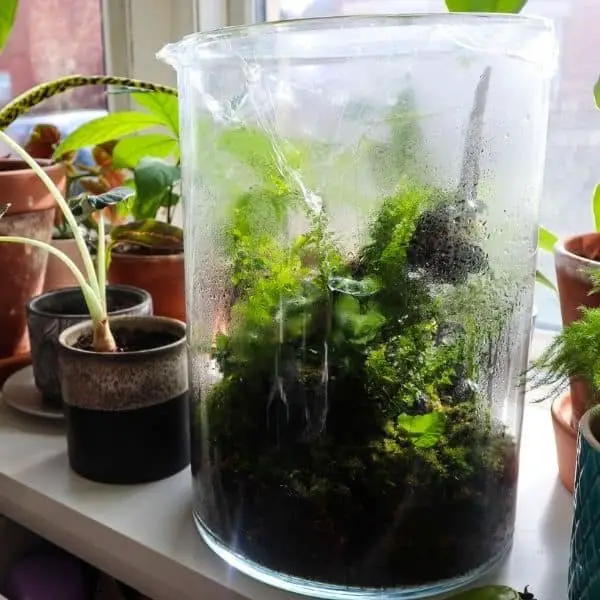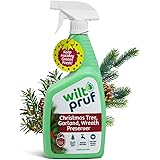How long does a terrarium last? It’s a common question for those looking to create their own mini green oasis. Well, fret not! In this article, we’ll delve into the fascinating world of terrariums and provide you with everything you need to know. From the ideal lifespan of a terrarium to the factors that can affect its longevity, we’ll uncover it all.
So, if you’re ready to embark on a journey into the enchanting realm of terrariums, keep reading. Let’s unravel the mysteries and secrets behind how long a terrarium can truly last.
How Long Does a Terrarium Last?
Terrariums have become increasingly popular in recent years, praised for their ability to bring a touch of nature into our homes and offices. These miniature ecosystems are not only visually appealing but also require minimal maintenance.
However, one common question that often arises is, “How long does a terrarium last?” In this article, we will delve into the factors that can influence the lifespan of a terrarium and provide insights on how to extend its longevity.
The Life Cycle of a Terrarium
To understand how long a terrarium can last, it is crucial to grasp its life cycle. A terrarium typically goes through four main stages:
1. Establishment:
At the beginning, when you first create a terrarium, it goes through an establishment phase. This stage is essential for the plants to acclimate to their new environment and establish root systems. It may take a few weeks for the terrarium to stabilize during this phase.
2. Growth and Flourishing:
Once the establishment stage is complete, the plants inside the terrarium enter a period of growth and flourishing. Under the right conditions, the plants will continue to thrive and develop new leaves, shoots, and roots. This stage can last for several months.
3. Maintenance:
As the terrarium matures, it requires regular maintenance to keep it healthy and balanced. This includes monitoring humidity levels, watering when necessary, removing any dead foliage, and occasionally pruning the plants. With proper care, a terrarium can remain in the maintenance stage for an extended period.
4. Decline and Regeneration:
Eventually, a terrarium may enter a stage of decline. Environmental factors, such as insufficient light or excessive moisture, can lead to the death of some plants within the terrarium. However, certain plants have the ability to regenerate from their surviving parts, allowing a terrarium to potentially start anew.
Read More: About Can Jade Plant Get Sunburn?
Factors Affecting the Lifespan of a Terrarium
The lifespan of a terrarium can vary depending on several factors. Understanding these factors will help you maintain your terrarium better and extend its longevity:
1. Plant Selection:
The types of plants you choose for your terrarium play a significant role in its lifespan. Opt for plants that thrive in high humidity, low light conditions, and compact spaces. Succulents, ferns, mosses, and carnivorous plants are popular choices for terrariums.
2. Light:
Adequate light is crucial for photosynthesis and overall plant health. While terrariums typically thrive in indirect or filtered light, they still require a certain level of brightness. Placing your terrarium near a north or east-facing window is usually ideal, but be cautious of direct sunlight, as it can lead to overheating.
3. Humidity and Ventilation:
Terrariums are designed to create a humid environment to mimic a tropical or rainforest ecosystem. However, excessive humidity can promote the growth of mold and fungi, potentially harming the plants. Proper ventilation is essential to ensure a healthy balance of humidity levels.
4. Watering:
Overwatering is one of the most common mistakes made by terrarium enthusiasts. The moisture trapped within a terrarium is often sufficient to sustain the plants, so it’s important to avoid excess watering. Monitor the moisture levels by observing the condensation on the glass walls of the terrarium and water only when necessary.
5. Temperature:
Temperature fluctuations can impact the lifespan of your terrarium. Most terrarium plants prefer temperatures between 60 to 75°F (15 to 24°C). Avoid placing your terrarium near drafty windows or heat sources, as extreme temperatures can stress or harm the plants.
6. Pests and Disease:
Like any other garden, terrariums are susceptible to pests and diseases. Keep a close eye on your terrarium and promptly address any signs of pest infestation or plant diseases. Regularly inspect the leaves and soil for any unusual symptoms, and take appropriate measures to control the issue.
Extending the Lifespan of Your Terrarium
While the lifespan of a terrarium ultimately depends on various factors, there are several steps you can take to extend its longevity:
1. Maintain a balanced ecosystem:
Ensure the terrarium’s environment remains balanced by monitoring humidity levels, ventilation, and light exposure. Adjust these elements as needed to provide the optimal conditions for your plants’ growth.
2. Prune and remove dead foliage:
Regularly inspect your terrarium for any dead or decaying leaves and promptly remove them. This helps prevent the spread of diseases and maintains the overall health of the other plants within the terrarium.
3. Proper watering:
Be mindful of how much water your terrarium requires. Avoid overwatering and only provide water when the soil appears dry or the plants show signs of dehydration. Each plant species may have different watering needs, so research the specific requirements of your terrarium plants.
4. Proper lighting:
Ensure your terrarium receives adequate light, but do not expose it to direct sunlight, as this can lead to overheating. Consider using artificial grow lights if natural light is limited.
5. Regular maintenance:
Dedicate time to regularly maintain your terrarium by inspecting for pests, cleaning the glass walls, and removing any debris. This helps promote a healthy environment for your plants to thrive.
6. Consider terrarium-reviving techniques:
If a part of your terrarium declines, you may try to salvage it by propagating from surviving plants or replanting new specimens. This can help breathe new life into your terrarium.
Terrariums can offer a captivating glimpse of nature within the confines of your home or office. While the lifespan of a terrarium varies depending on various factors, with proper care and maintenance, you can significantly extend its longevity.
By selecting appropriate plants, ensuring adequate lighting and humidity, and maintaining a balanced ecosystem, your terrarium can thrive for months or even years to come. Remember, a little effort goes a long way in preserving the beauty of your miniature garden.
Read More: About Do Pothos Like Humidity?
Frequently Asked Questions (FAQs)
A terrarium can last for several months to several years with proper care and maintenance.
The lifespan of a terrarium can be influenced by various factors, such as the type of plants used, the size of the container, the lighting conditions, and the level of care provided.
Yes, the lifespan of a terrarium can vary depending on the type. Closed terrariums, which have a sealed or partially sealed environment, can last longer compared to open terrariums due to the moisture retention.
The watering frequency for a terrarium depends on the moisture requirements of the plants and the type of terrarium. Generally, it is recommended to water a closed terrarium every 2-3 weeks and an open terrarium every 1-2 weeks.
In some cases, it is possible to revive a dying terrarium. Assess the condition of the plants, adjusting the watering schedule, and ensuring proper light levels can help in rejuvenating a terrarium. However, it is important to act promptly to increase chances of revival.
Signs of a dying terrarium may include yellowing or browning leaves, mold growth, excessive condensation, and a foul odor. These signs suggest an imbalance in the terrarium’s environment and require attention.
Yes, you can replace plants in an existing terrarium. Carefully remove the old plants, prepare suitable soil for the new plants, and transplant them into the terrarium. Ensure that the new plants have similar care requirements as the previous ones.
Yes, here are some care tips to enhance the lifespan of your terrarium:
Place the terrarium in indirect sunlight to prevent overheating and sunburn.
Avoid overwatering by monitoring the moisture levels and soil conditions.
Trim and remove any dead or dying plant parts to maintain overall health.
Keep the terrarium clean by wiping off any dust or debris from the glass surfaces.
Monitor the temperature and humidity levels to ensure they are suitable for the plants.\
Final Thoughts
Terrariums can bring a touch of nature into any space, but how long do they actually last? The lifespan of a terrarium largely depends on various factors such as maintenance, plant selection, and environmental conditions. With proper care and attention, a well-constructed terrarium can last for many years. Regular watering, proper sunlight exposure, and occasional pruning are essential for its longevity.
Some terrariums may require occasional maintenance, such as replacing dead plants or controlling pests. So, if you’re looking to create a long-lasting mini ecosystem, ensure you provide the necessary care and attention to your terrarium.
Auto Amazon Links: No products found.
Wilt-Pruf® Christmas Tree/Cutting Preserver Spray |Preserves Christmas Trees, Wreaths, Garlands, Cuttings and Carved Pumpkins | Reduces Needle Drop | Keeps Cut Trees Fresh Longer | Natural (32 oz)
$21.99 (as of November 14, 2025 21:32 GMT +00:00 - More info- Product prices and availability are accurate as of the date/time indicated and are subject to change. Any price and availability information displayed on [relevant Amazon Site(s), as applicable] at the time of purchase will apply to the purchase of this product.
Perfect Plants Christmas Tree Saver 8oz. | Easy Use Xmas Tree Preserver Food | Have Healthy Green Christmas Trees All Holiday Season
$13.99 (as of November 14, 2025 21:32 GMT +00:00 - More info- Product prices and availability are accurate as of the date/time indicated and are subject to change. Any price and availability information displayed on [relevant Amazon Site(s), as applicable] at the time of purchase will apply to the purchase of this product.
HoHoHoH2o Automatic Christmas Tree Watering System Device, Santa’s Tree Helper Keeps Your Christmas Tree Healthy and Fresh, Refillable 2.5 gallons Capacity Box - Red/Snowflakes
$99.95 (as of November 14, 2025 21:32 GMT +00:00 - More info- Product prices and availability are accurate as of the date/time indicated and are subject to change. Any price and availability information displayed on [relevant Amazon Site(s), as applicable] at the time of purchase will apply to the purchase of this product.
Christmas Tree Watering Funnel – 39 Inch Adjustable 3-Section Design, Reusable & Spill-Free, Easy Watering for Real Christmas Trees
$17.99 (as of November 14, 2025 21:32 GMT +00:00 - More info- Product prices and availability are accurate as of the date/time indicated and are subject to change. Any price and availability information displayed on [relevant Amazon Site(s), as applicable] at the time of purchase will apply to the purchase of this product.
Forest Fresh Christmas Tree Preservative Tablets – Tree Water Additive for Live Fresh-Cut Trees – Keeps Trees Hydrated and Reduces Needle Drop – Non-Toxic, Made in USA – 1 Packet (8 Tablets)
$5.99 (as of November 14, 2025 21:32 GMT +00:00 - More info- Product prices and availability are accurate as of the date/time indicated and are subject to change. Any price and availability information displayed on [relevant Amazon Site(s), as applicable] at the time of purchase will apply to the purchase of this product.
Zevo Flying Insect Trap & 3 Refill Cartridges - Plug in Fly Trap & Indoor Bug Catcher for Gnats, House & Fruit Flies - Blue & UV Light Technology, Mess-Free Alternative to Bug Zapper
$25.96 (as of November 15, 2025 08:34 GMT +00:00 - More info- Product prices and availability are accurate as of the date/time indicated and are subject to change. Any price and availability information displayed on [relevant Amazon Site(s), as applicable] at the time of purchase will apply to the purchase of this product.
Zevo Flying Insect Trap Official Refill Cartridges - Fits Both Zevo Trap & MAX Indoor Fly Trap - Authentic Trap+Lock Technology to Catch Gnats, House & Fruit Flys (4 Official Refill Cartridges)
$14.97 (as of November 15, 2025 08:34 GMT +00:00 - More info- Product prices and availability are accurate as of the date/time indicated and are subject to change. Any price and availability information displayed on [relevant Amazon Site(s), as applicable] at the time of purchase will apply to the purchase of this product.
TERRO Fruit Fly Traps for Indoors (4 Pack) + 180 Days of Lure Supply
$10.95 (as of November 15, 2025 08:34 GMT +00:00 - More info- Product prices and availability are accurate as of the date/time indicated and are subject to change. Any price and availability information displayed on [relevant Amazon Site(s), as applicable] at the time of purchase will apply to the purchase of this product.
TERRO Ant Killer Bait Stations T300B - Liquid Bait to Eliminate Ants - Bait System - 12 Count Stations for Effective Indoor Ant Control
$11.44 (as of November 15, 2025 08:34 GMT +00:00 - More info- Product prices and availability are accurate as of the date/time indicated and are subject to change. Any price and availability information displayed on [relevant Amazon Site(s), as applicable] at the time of purchase will apply to the purchase of this product.
Advion Cockroach Gel Bait, 4 Tubes x 30-Grams, 1 Plunger and 2 Tips, German Roach Insect Pest Control, Indoor and Outdoor Use, Roach Killer Gel for American, German and Other Major Cockroach Species
$26.99 (as of November 15, 2025 08:34 GMT +00:00 - More info- Product prices and availability are accurate as of the date/time indicated and are subject to change. Any price and availability information displayed on [relevant Amazon Site(s), as applicable] at the time of purchase will apply to the purchase of this product.











